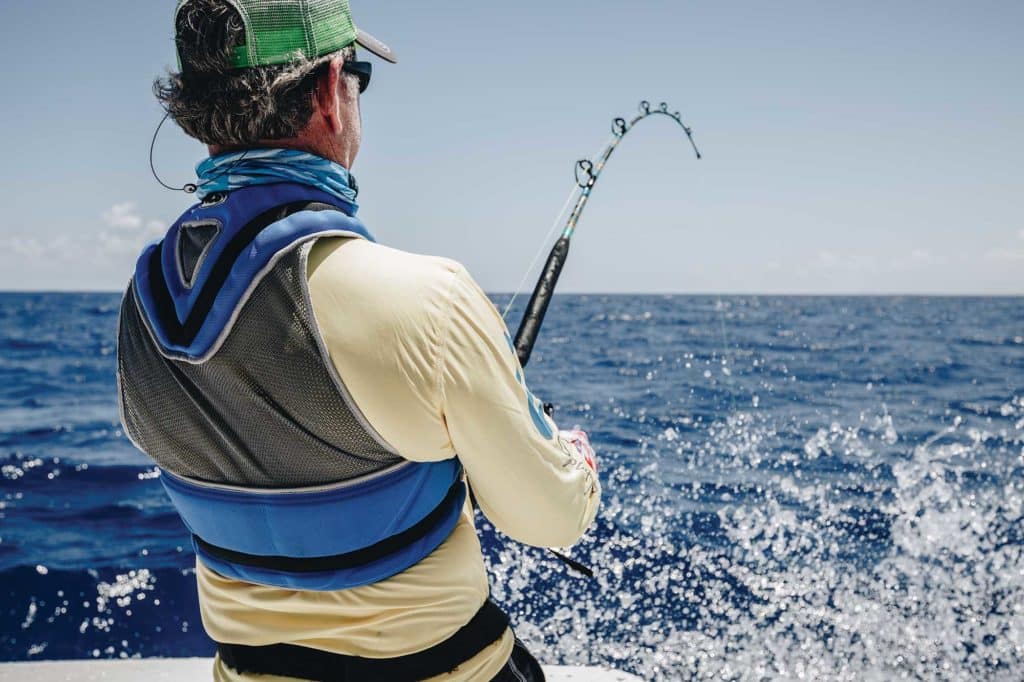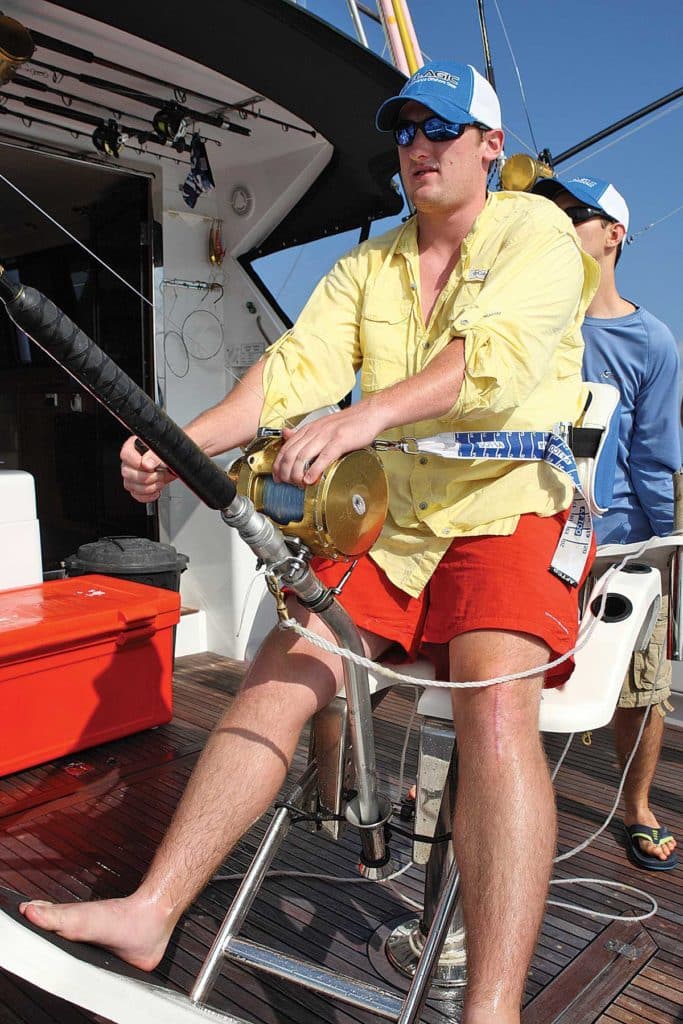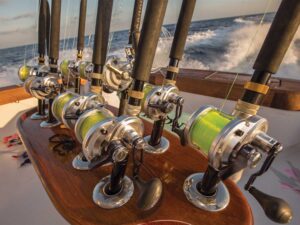
In the third century BC, the Greek mathematician and engineer Archimedes famously quipped, “Give me a lever and a place to stand and I shall move the earth with it.” The principles he extolled at the time still ring true today in the world of modern sport fishing.
A fishing rod is nothing more than a really expensive lever — it not only provides direct leverage but also the added lifting force as it loads and then unloads under pressure. Knowing how to properly manage that lever — the fishing rod — is one of the skills any good offshore angler should master. Here are a few key points.
High-Sticking Isn’t Just for Hockey
Consider yourself standing in the cockpit of a sport-fisher for a moment, facing aft and watching the spread. If your body were a protractor, your feet would be at zero degrees, and directly overhead would be 180 degrees. The horizon is straight out at 90 degrees. Now, add a fishing rod in your hands and a hot little blue marlin at the other end of the line.
The rod’s power curve is within the range of around 110 to 150 degrees. This is where the rod is loaded, with a nice bend in it. However, one mistake that even experienced anglers occasionally make is allowing the rod to unload at the top of the pump-and-wind stroke that we all use. After about 150 degrees at the top of the range, the rod unloads and the tip goes near-vertical. It’s at this point that you’ve not only lost the leverage on the fish but also will most likely give it slack line as you drop the rod and begin the next crank. It’s called “high-sticking.” To avoid this, just watch the rod tip and don’t let it go too high — stop the upstroke and crank down instead. Even better, when the opportunity presents itself, just hold the rod in a nice loaded position and wind without lifting the rod at all. You’ll regain line considerably faster without giving the fish any slack. This really helps when the fish is making a crazy run and you have to pick up line in a hurry. Don’t try to pump, just reel like mad.
Dropping the rod to a near-horizontal position is nearly as bad as high-sticking. Without the rod to act as a shock absorber, the line is now being pulled directly off reel, where a sudden surge by the marlin can break the line. The world’s best anglers always strive to keep the rod in a loaded, comfortable and power-inducing bend throughout the fight.

Chair Work
These same principles also apply when using heavy tackle in the fighting chair, with the added benefit that now your body is also acting as a secondary lever. However, it is critical that the chair be set up for the angler either before the strike or as soon as the fish calms down enough to allow adjustments. If the footrest is too short for a tall angler, they will feel very uncomfortable at the top of the stroke and may risk tumbling forward out of the chair under the pull of heavy drag. Once everything is properly adjusted, the bulk of the angler’s weight will remain well behind the reel even at the height of the upstroke, enabling them to comfortably regain line without that awkward feeling that they could fall forward.
To check the fit, have the angler strap into the reel and bucket harness in the chair, then grab the rod tip and pull it down toward the covering board. With their legs locked straight, the angler should be able to be pulled up from the chair to a comfortable raised position before using their leverage to sit back down, keeping the rod loaded the entire way. Crank on the upswing, sit to regain line and repeat.
In both situations, the reel is not a winch but rather just a line-storage device. It’s the rod, and the leverage it gives the angler, that wins the fight.







